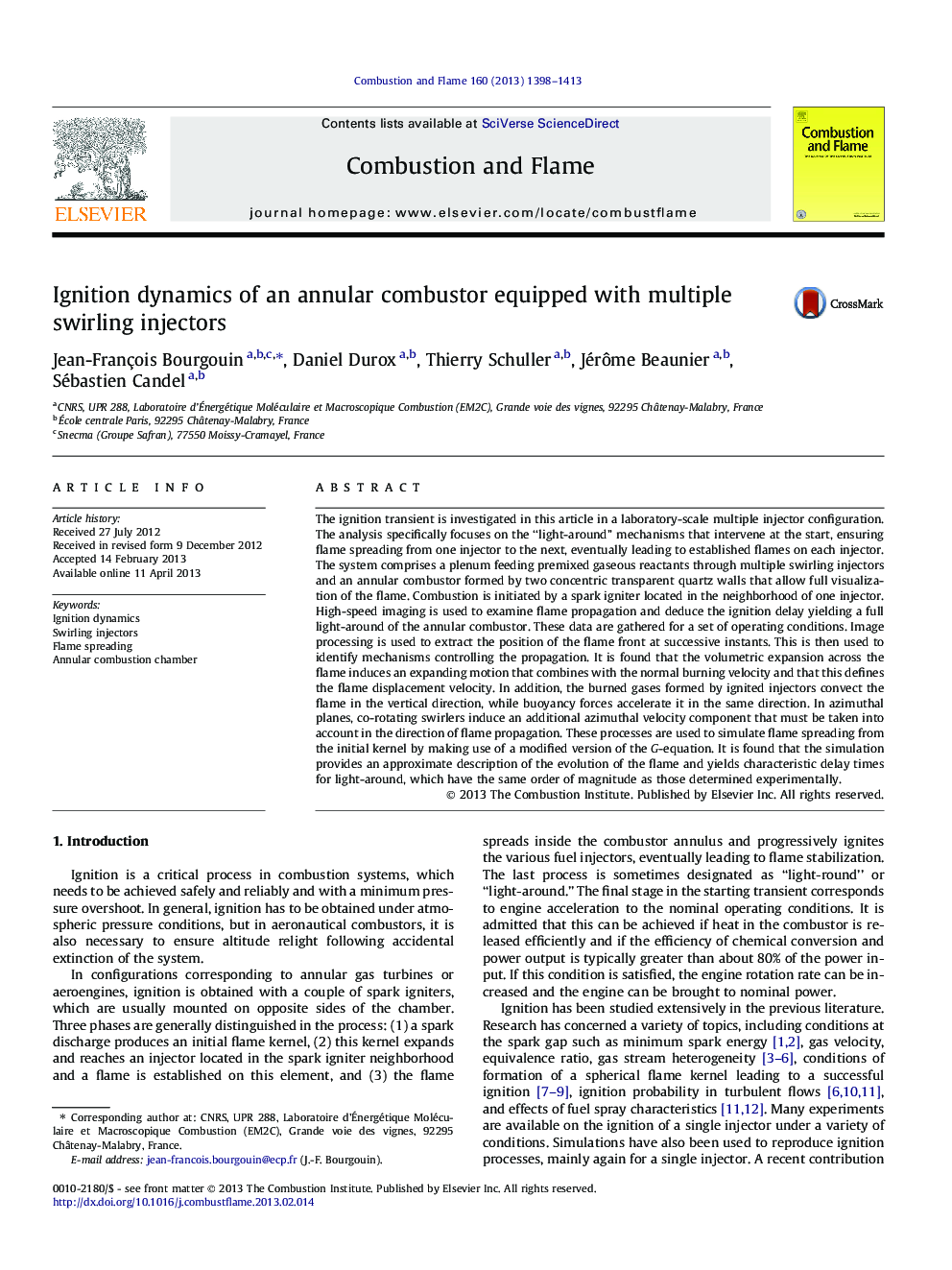| Article ID | Journal | Published Year | Pages | File Type |
|---|---|---|---|---|
| 168884 | Combustion and Flame | 2013 | 16 Pages |
The ignition transient is investigated in this article in a laboratory-scale multiple injector configuration. The analysis specifically focuses on the “light-around” mechanisms that intervene at the start, ensuring flame spreading from one injector to the next, eventually leading to established flames on each injector. The system comprises a plenum feeding premixed gaseous reactants through multiple swirling injectors and an annular combustor formed by two concentric transparent quartz walls that allow full visualization of the flame. Combustion is initiated by a spark igniter located in the neighborhood of one injector. High-speed imaging is used to examine flame propagation and deduce the ignition delay yielding a full light-around of the annular combustor. These data are gathered for a set of operating conditions. Image processing is used to extract the position of the flame front at successive instants. This is then used to identify mechanisms controlling the propagation. It is found that the volumetric expansion across the flame induces an expanding motion that combines with the normal burning velocity and that this defines the flame displacement velocity. In addition, the burned gases formed by ignited injectors convect the flame in the vertical direction, while buoyancy forces accelerate it in the same direction. In azimuthal planes, co-rotating swirlers induce an additional azimuthal velocity component that must be taken into account in the direction of flame propagation. These processes are used to simulate flame spreading from the initial kernel by making use of a modified version of the G-equation. It is found that the simulation provides an approximate description of the evolution of the flame and yields characteristic delay times for light-around, which have the same order of magnitude as those determined experimentally.
